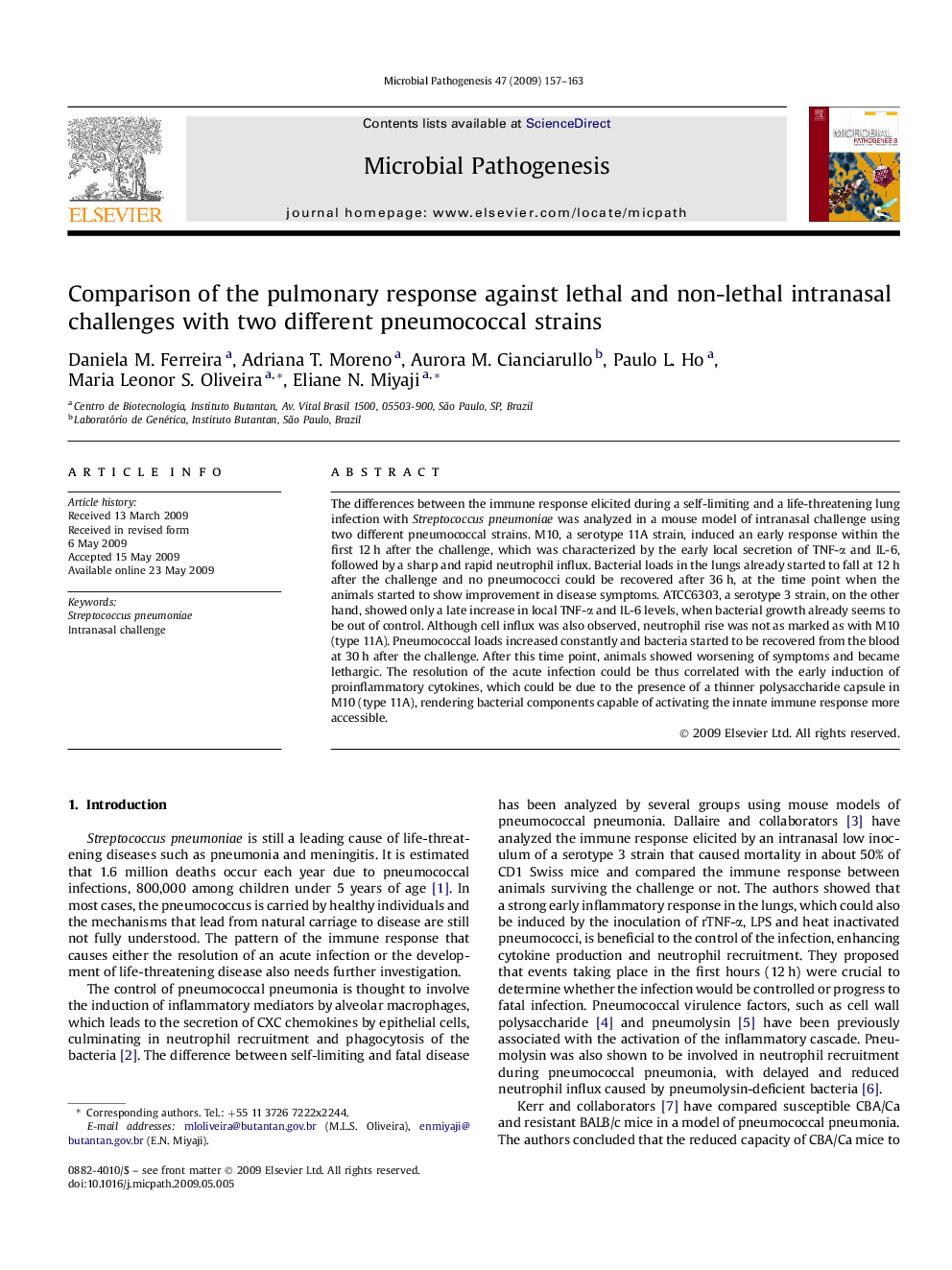| Article ID | Journal | Published Year | Pages | File Type |
|---|---|---|---|---|
| 3417018 | Microbial Pathogenesis | 2009 | 7 Pages |
The differences between the immune response elicited during a self-limiting and a life-threatening lung infection with Streptococcus pneumoniae was analyzed in a mouse model of intranasal challenge using two different pneumococcal strains. M10, a serotype 11A strain, induced an early response within the first 12 h after the challenge, which was characterized by the early local secretion of TNF-α and IL-6, followed by a sharp and rapid neutrophil influx. Bacterial loads in the lungs already started to fall at 12 h after the challenge and no pneumococci could be recovered after 36 h, at the time point when the animals started to show improvement in disease symptoms. ATCC6303, a serotype 3 strain, on the other hand, showed only a late increase in local TNF-α and IL-6 levels, when bacterial growth already seems to be out of control. Although cell influx was also observed, neutrophil rise was not as marked as with M10 (type 11A). Pneumococcal loads increased constantly and bacteria started to be recovered from the blood at 30 h after the challenge. After this time point, animals showed worsening of symptoms and became lethargic. The resolution of the acute infection could be thus correlated with the early induction of proinflammatory cytokines, which could be due to the presence of a thinner polysaccharide capsule in M10 (type 11A), rendering bacterial components capable of activating the innate immune response more accessible.
